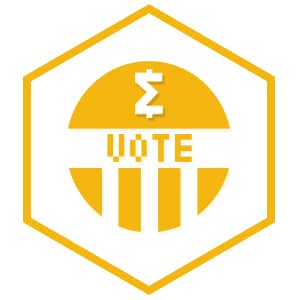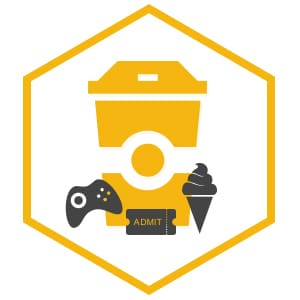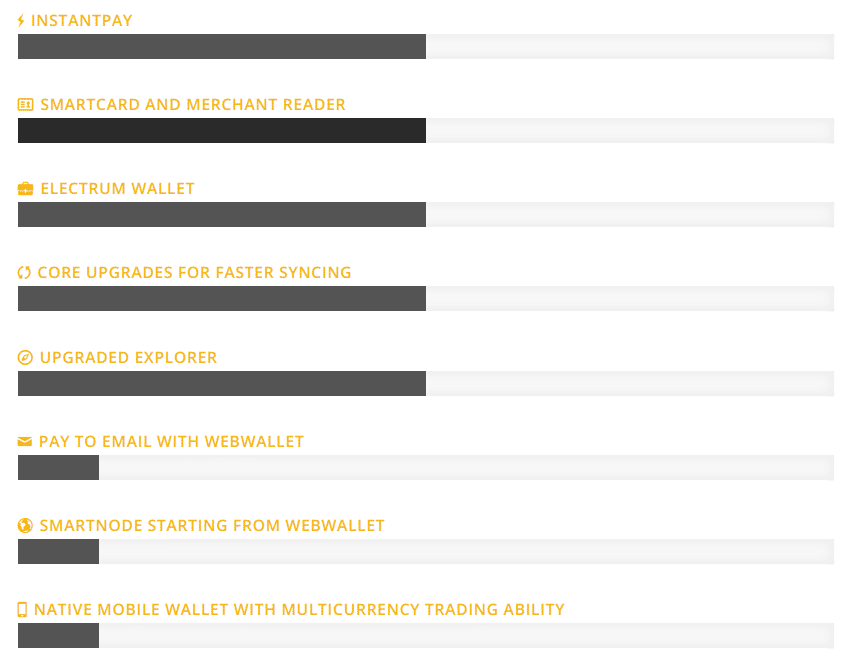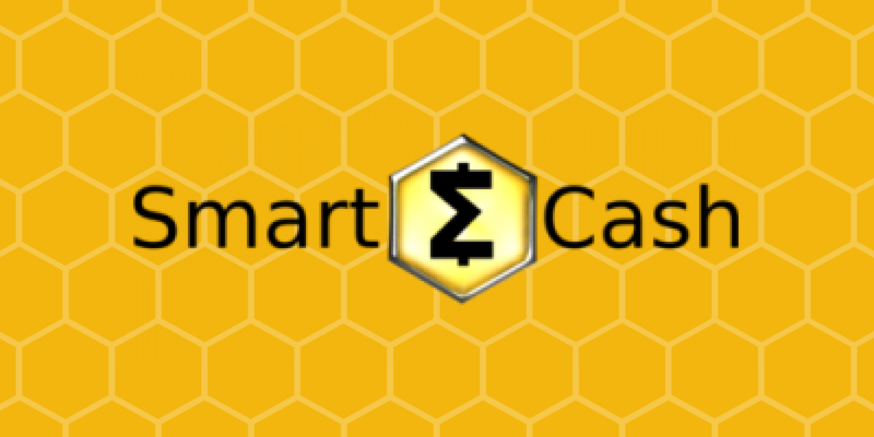What is SmartCash?
SmartCash is a community-driven cryptocurrency built on the zerocash protocol. It prioritizes privacy and fast transaction times, with the goal of achieving merchant adoption. The project’s defining feature is its distrust of central authority, even forgoing a Foundation or core team.
The currency’s characteristics are similar to Dash in that it seeks to gain mass adoption with a fast, private currency. The major difference is that Dash is seen as a somewhat centralized currency with its use of masternodes and reliance on the Dash Foundation. SmartCash hopes to avoid to avoid the idea of Foundations, core teams, or centralized mining.

Instead, SmartCash implements a number of decentralized governance and development features. It invests heavily in community-appointed development. As a result, SmartCash’s popularity has grown. While it’s nowhere near as well-known as Dash and other private payment platforms like Zcash and Monero, SmartCash provides an interesting perspective on anonymous, untraceable, usable cryptocurrency.
SmartHive & SmartVoting
The community driving SmartCash believes that a cryptocurrency with a “core” team is ultimately inefficient and corrupt. The concern is that the founders will prioritize making money over making a platform that’s as open and low cost as possible. We’ve seen this play out with the growth of ICOs and growing token allocations for founding teams. These central organizations can end up being bureaucratic, slow to change, and conflicted in priorities.

Instead, SmartCash proposes a governance model inspired by the ways ants and bees self-organize. The idea is to create a hive, where individuals can contribute to clear projects on small teams. There’s an argument to be made that this uncoordinated model might end up becoming more inefficient than the Foundation/core team model it seeks to replace. However, the community believes self-governing teams can be more nimble and efficient than guided development.
Every holder of SMART tokens will be entitled to voting rights. 1 token = 1 vote. This so-called SmartVoting will allow anyone to submit proposals to the hive for consideration and voting. The goal is a bottom-up management structure where projects receive funding from the SmartHive fund and hive members receive payment for completing those proposals. SmartHive is the lifeblood of the project, and it’s intended to govern the project indefinitely.
This structure has generated strong grassroots support from a group of die-hard fans that are committed to the project. SmartCash allocates a portion of every block reward to funding future development projects. To date, that fund is worth more than $250 million.
Hive Structuring Teams
Once the hive votes to approve a proposed project, a team will take up that project. At the beginning, these teams are straightforward: development, outreach, and support. However, as the improvement proposals and community grow, new teams form. A team has a maximum of eight participants, working together as a small group. Beyond that, you’ll have to form a new team to work on projects.

This is called Hive Structuring Teams and it breaks the contributing community down into smaller subgroups, with individuals coming and going from teams as needed. Each team has its own budget and community-appointed team coordinator. Once formed, the team operates autonomously. There’s no central command or control structure in place, aside from a whole community SmartVoting referendum.
Hive Structuring Teams are committed community members involved in the project on a day-to-day basis. The teams will essentially employ individuals. Of course, there will be less formal ways for community members to contribute as part of the SmartHive if they can’t commit to joining a team.
SmartRewards
SmartRewards encourage long-term holding of SMART tokens. As such, it’s a price stabilizing mechanism, decreasing the trading volume and therefore the volatility of SMART.
Each wallet that holds more than 1000 SMART will get paid a reward for holding that SMART over a 30 day period. The SmartRewards pay on the 25th of every month. If you’ve held 1000 SMART for over a month, you’ll receive a reward for not spending those tokens. The reward comes from the block reward allocation.
To be counted, you’ll need to move 1000 SMART to a single address before the 25th of the current month. If you do, then you’ll receive your reward on the 25th of the following month.
[thrive_leads id=’5219′]
InstantPay
An important piece of SmartCash’s value proposition is fast transactions. They haven’t yet released InstantPay, but it will be the project’s answer to InstantX from Dash.
The key functionality for InstantPay will be point-of-sale transactions for in-store and online purchases. The SmartCash community strongly believes that people should be able to use cryptocurrency to pay for their daily needs. So, they’re developing a network of SmartNodes–similar to Dash masternodes–that allow for instant verification. A user who wants to operate a SmartNode will need to stake 10,000 SMART as collateral. They’ll receive part of the mining reward in exchange for their services.

SmartCash’s vision of instant payments that can rival Visa or Mastercard is an exciting challenge. However, it’s not clear how SmartCash intends to beat other cryptocurrencies to point-of-sale adoption. Bitcoin, Dash, and other major cryptocurrencies are already struggling to get their coins accepted online and in-stores. SmartCash still has a long way to go before they realize this revolution.
The first step will be actually building and launching InstantPay. They expect to launch it later this year.
Privacy
The SmartCash source code began as a fork of Zcoin, using the zerocash protocol. Zerocash is the foundation for the privacy coin Zcash. It depends on zero-knowledge proofs to confirm transactions without sharing the sender, recipient, or amount of the transaction.
SmartCash used to support the functionality to renew coins. Renewal breaks the chain of transactions by allowing wallets to burn old coins and generate new ones with no history. There’s no link between the new coin and the old one that the user burned to create it. However, due to a bug in the zerocash protocol, SmartCash had to disable the renew feature.
Instead, they’ll be implementing BIP47, a Bitcoin proposal that uses payment codes to authorize transactions instead of using traceable sender-recipient information.
Mining
SmartCash uses a Keccak mining algorithm. It’s known to be ASIC-resistant, therefore promoting decentralization of mining capacity.
On average, the block reward is around 101.8 SMART, and the block time is 54 seconds. As of March 2018, the mining network had over 17TH/s of mining capacity.
SMART Token
The network and SMART token launched on July 11, 2017. It maintained a fairly steady price of a few cents over the course of its first six months. In January, the price suddenly peaked, fell, and peaked in a matter of weeks. It has since declined to its current level of $0.20/SMART after starting at $0.01-$0.03 last summer and fall.
SmartCash is among the top 100 cryptocurrencies by market cap.
https://files.coinmarketcap.com/static/widget/currency.js
How to Buy SmartCash (SMART)
SmartCash trades on CryptoBridge, CoinExchange, and HitBTC.
You’ll need to own BTC or ETH before you can purchase SMART. To buy BTC, visit Coinbase or Gemini.
Where to Store SmartCash (SMART)
Once you’ve purchased SMART on the exchanges, you’ll want to transfer it to your own personal wallet for safe keeping. To do so, visit SmartCash’s wallets page.
You can use their web wallets to create paper wallets and easily manage your funds. You might also want to try the GUI wallet so you can vote on proposals and stake your SMART for SmartRewards.
Roadmap
Currently, SmartCash has 15 projects funded through its SmartHive governance model. Another 6 projects have already completed successfully. In total, they account for $3.2 million in funded development projects (equivalent in SMART).


The top development priorities are InstantPay, cards and readers for payment in stores, an electrum wallet, faster syncing, and an upgraded block explorer. Mobile wallets, atomic swaps, and BIP47 privacy features are also under development.
Conclusion
SmartCash is a project that’s all-in on open governance. It’s especially attractive for those who are interested in privacy, transparency, and decentralization at all costs. This community-driven approach, if successful, could be the beginning of a new paradigm for decentralized development using small teams. On the other hand, critics worry that this libertarian approach could descend into disorganization and no cohesive vision for the project moving forward.
Ultimately it comes down to results. SmartCash has implemented various proposals successfully, but it’s still failing to deliver currently on its promises of instant transactions and privacy. The project has a healthy war chest to fund future development, but 2018 will prove whether it’s up to the challenge.





